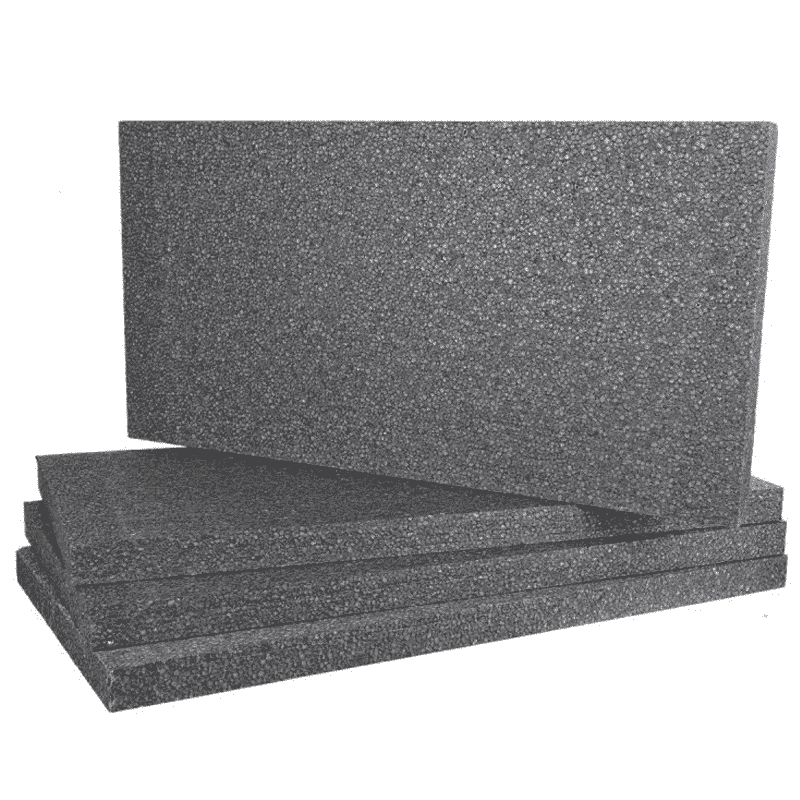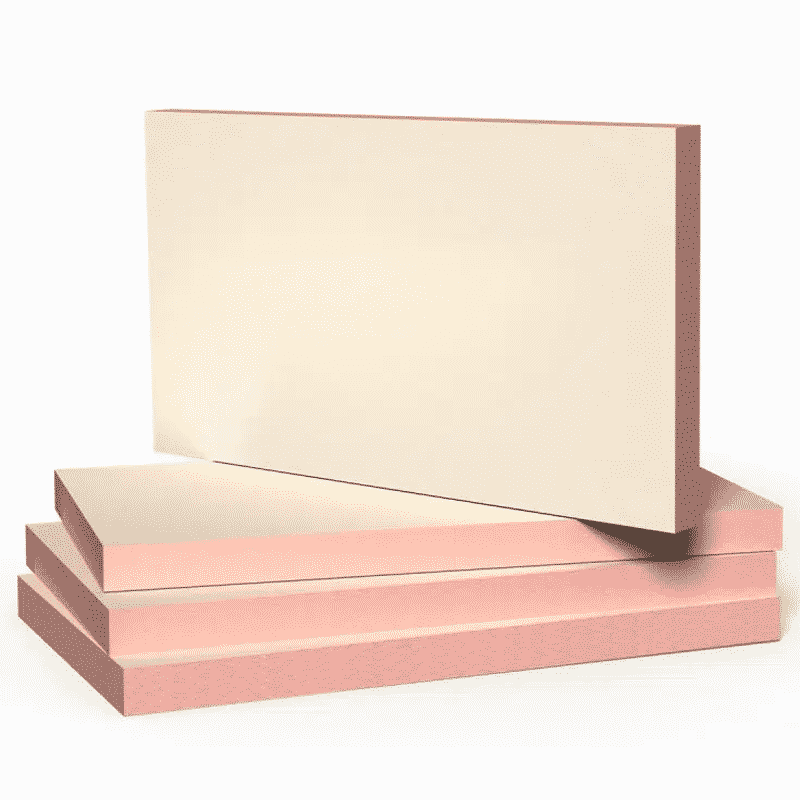
It is a well known fact that installing external wall insulation will save you energy. The question people often ask themselves is how much energy will insulation save me? In today's blog, we will dissect the value of each type of insulation in our range, and how they affect bills!
How to measure what you lose and save?
Given that we measure the price per/kWh, it is prudent to stay focused on the watts. U-values play a significant role in determining the heat you lose through your walls. Building regulations dictate that your property should strive for a U-value of 0.3W/m2K. As U-values are also referred to as thermal transmittance, they indicate the passage of heat energy through your walls. In practical terms, this means that 'for every 1 ⁰C degree difference between inside and outside the wall, 0.3 watts will be transferred every square metre.' (PBC Today) The table below displays typical U-values of walls without any insulation and an ICF wall for comparison.
| Solid brick wall | Cavity wall | ICF | |
| U-Value | 2W/m2K | 1.5W/m2K | 0.30 - 0.11W/m2K |
Heat loss does not just occur through walls which poses extra problems. Approximately 35% of heat loss is through walls, however, the rest is lost through various avenues. Therefore, the loft, floor, and window and doors account for the other 65%. Windows can make a significant impact on the overall performance of a thermal envelope, as with lower glazing, they will act as cold bridges.
| Single glazing | Secondary glazing | Double glazing | Triple glazing | Vacuum double glazing | |
| U-Value | 5.2W/m2K | 2.7W/m2K | 2.6W/m2K | 0.7W/m2K | 0.7W/m2K |
The process of reducing energy loss is simple, as seen in the table. More layers of material tend to mean better insulation savings. With windows, the presence of layers of air act as extra insulation and greatly enhance the capacity.
This segment leads us onto the savings you achieve with our three different insulations boards; Mineral Wool, EPS, and Kingspan K5. We will also discuss the carbon footprint of these insulation boards.
How much energy will Mineral Wool insulation save me?
Mineral Wool insulation is the insulation board with the best benefits in our range. Naturally, the U-value of the insulation board will determine the savings. However, Mineral Wool can offer other exceptional benefits; the A1 fire rating ensures that the boards are non-combustible. They are composed of molten rock spun into fibres and compressed into batts in dual densities. The dual densities are crucial to the acoustic insulation that Mineral Wool offers. The layered and complex composition of the boards traps extra air which is a fantastic acoustic insulator. Eurima estimates that well installed Mineral Wool can lower the decibel level by up to 50dB.
| Thermal conductivity | Thickness required for 0.3W/m2K | |
| Mineral Wool | 0.036W/(m2K) | 110mm |
| EPS | 0.032W/(m2K) | 90mm |
| Kingspan K5 | 0.021W/(m2K) | 60mm |
Rockwool, our supplier of Mineral Wool, places the energy savings at 70% when your thermal envelope reaches the building regulations. In terms of savings, in relation to the current energy costs, you could achieve savings of up to £1,000 a year. However, many people will question the payback and environmental impact of Mineral Wool.
Mineral Wool is highly sustainable and Rockwool in particular, focus on the carbon footprint of the whole journey of the product:
So while our production is energy-intensive, our stone wool insulation saves far more energy and CO2 – actually 100 times more – than is consumed and emitted during its production [...] Stone wool is circular by nature and can be fully recycled indefinitely with no loss of performance.
How much energy will EPS insulation save me?
Ultimately, the energy savings depend solely on whether the envelope achieves the required standard of 0.3W/m2K. As displayed in the above table, 90mm of EPS will achieve that figure. From a cost perspective, this is fantastic, as EPS is a low cost product. Moreover, it does not sacrifice any of the thermal performance. The potential saving of up to £1,000 per year remains the same, with a shorter pay off in comparison to Mineral Wool. However, you will sacrifice several other benefits like acoustic insulation and combustibility.
EPS does possess a bit of a trump card when it comes to carbon emissions in its lifecycle. The manufacturing process does not use CFCs or HCFCs, which are blowing agents. Therefore, the ozone depletion potential of EPS is zero. It is also fully recyclable.
How much energy will Kingspan K5 insulation save me?
Kingspan K5 is the best performing board in thermal insulation terms. You only require 60mm to achieve the industry standard. K5 also offers several other benefits, with the major benefit being the enhanced mechanical impact resistance. As a result, we refer to K5 as our space-saving system. The reduced thickness and increased impact resistance make it suitable for areas where spaces are a premium.
Kingspan offers a statement on their environmental impact: 'Kingspan Insulation is a world-leading manufacturer of innovative, high performance insulation products which help reduce the carbon footprint of the built environment. Kingspan Kooltherm and Therma product ranges are manufactured without the use of CFCs / HCFCs, have zero Ozone Depletion Potential and low Global Warming Potential.' (Kingspan)
What's the situation in the UK?
In simple terms, it is pretty bleak! Thankfully, the winter has been reasonably mild throughout Europe, so the need for switching on the heating has been lower. However, this will be down to the rising carbon emissions and global warming that is plaguing the planet.
When we focus more on the UK market, we start to see that shortages affect the energy sector. The impact is unfortunately felt most in lower income areas, as it is intrinsically linked with the cost. The NEA estimates and projects the levels of fuel poverty in the UK, and it makes for grim reading: 'Last October, 4.5 million UK households were in fuel poverty. Now National Energy Action estimates there are 6.7 million. Come April, we are expecting there to be 8.4 million.' (https://www.nea.org.uk/energy-crisis/) Fuel poverty means that a household is not able to heat a home to an adequate temperature. With rising energy costs and the general cost of living crisis, it is very likely that the NEA is correct in their projections.
The UK Government energy price cap came into effect on the 1st October 2022. The legislation caps bills at £2,500 per annum, and does so by capping the daily costs:
| Price per/kWh | Daily standing charge | |
| Electricity | £0.34 | £0.46 |
| Gas | £0.10 | £0.28 |
There is a lot of uncertainty and fluidity with this topic. The prices of electricity and gas are highly volatile so change daily. The price cap is due to last until April 2024 but it is hard to speculate about the impact of that on the cost of living crisis due to the threats of a recession and inflation. The question of 'how much energy will insulation save me' is not one at the top of many people's lists.
Final thoughts
The endeavour of installing external wall insulation can be expensive. However, when you consider the payback timescale, and the impact on your thermal comfort and your carbon footprint, it is an endeavour worth pursuing. The UK Government has launched an initiative worth £1bn to finance loft insulation in lower income homes. Other initiatives are also present to help. EWI systems also improve EPC ratings which can result in enhanced resale value.
If you have any more questions about the topic, leave a comment below!



